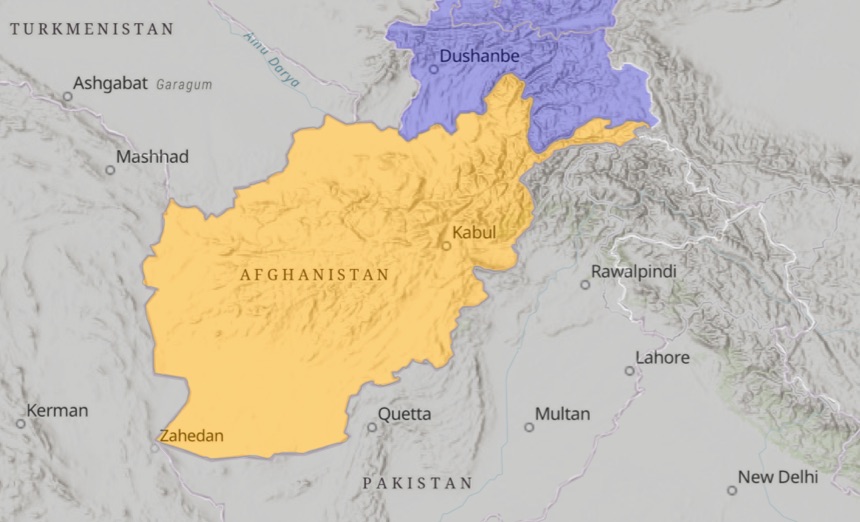The security situation in Afghanistan is highly unstable. Protracted armed conflict with non-state armed groups and foreign entities has caused large-scale population displacement, economic precarity and frequent surges of armed violence.1 Following the withdrawal of US troops in August 2021, the Taliban took over most of the country.2 As of 2023, reports state that human rights violations persist.3 Due to this insecurity, Afghanistan has high levels of weapons and ammunition trafficking.4 Unexploded ordnance left in the country also poses significant risks.5
The HALO Trust is working on the ground to support the through-life management of ammunition. Efforts have included building and rehabilitating ammunition storage areas, destroying excess ammunition, deploying conventional weapons destruction teams during emergency call-outs, and implementing physical security and stockpile management projects to secure ammunition in Mazar-iSharif.6
1 “Afghanistan,” Crisis Group, accessed August 25, 2022, https://www.crisisgroup.org/asia/south-asia/afghanistan.
2 “Afghanistan,” Rule of Law in Armed Conflicts Project (RULAC), Geneva Academy of International Humanitarian Law and Human Rights, updated October 7, 2022, https://www.rulac.org/browse/countries/afghanistan#collapse1accord.
3 “World Report 2023: Afghanistan Events of 2022,” Human Rights Watch, accessed September 11, 2023, https://www.hrw.org/world-report/2023/country-chapters/afghanistan.
4 Tanya Mehra, Méryl Demuynck, and Matthew Wentworth, Weapons in Afghanistan: The Taliban's Spoils of War (The Hague: International Centre for Counter-Terrorism, 2022), https://icct.nl/publication/taliban-spoils-of-war/.
5 “Afghanistan,” UN Mine Action Service, accessed August 25, 2022, https://www.unmas.org/en/programmes/afghanistan.
6 “Ammunition Management Activity Platform (A-MAP),” GICHD, 2022, a-map.gichd.org.
Launch the country dashboard
Further information
Accidental explosions
Since the Small Arms Survey began collecting data in 1979, numerous accidental explosions have been reported in Afghanistan.
Table 1. Accidental explosions in Afghanistan (1979–2021)
Year | Location | Owner/manager | Deaths | Injuries |
2015 | Kandahar | State (police) | 2 | 21 |
2013 | Kabul | State (military) | 0 | 0 |
2009 | Behsud | Foreign (intervention) | 4 | 17 |
2009 | Jalalabad | State (military) | 1 | 20 |
2006 | Jabal-os-Saraj | State (military) | 2 | 60 |
2005 | Bajgah | Non-state (actor) | 30 | 70 |
2005 | Rustaq | N/A | 7 | 16 |
2004 | Bagrami | State (military) | 0 | 0 |
2004 | Ghazni | N/A | 7 | 3 |
2004 | Herat | N/A | 5 | 34 |
2003 | Aqcha | Non-state (actor) | 25 | 9 |
2003 | Bagram | Non-state (actor) | 6 | 10 |
2003 | Mehtar Lam | Non-state (actor) | 9 | 0 |
2003 | Tokhichi | State (military) | 1 | 3 |
2002 | Jalalabad | Non-state (company) | 26 | 90 |
2002 | Kandahar | Foreign (intervention) | 0 | 0 |
2002 | Spin Boldak | Non-state (actor) | 32 | 70 |
2002 | Spin Boldak | N/A | N/A | 2 |
2002 | Spin Boldak | N/A | 0 | 2 |
2001 | Darulaman | Non-state (actor) | 0 | 3 |
2000 | Kabul | Non-state (actor) | 0 | 0 |
1999 | Kabul | Non-state (actor) | 0 | 0 |
1999 | Kabul | Non-state (actor) | 1 | 8 |
1999 | Mazār-e Sharīf | Non-state (actor) | 7 | 47 |
1997 | Jalalabad | Non-state (actor) | 30 | 128 |
1996 | Kabul | Non-state (actor) | 1 | 8 |
1996 | Kabul | State (other) | 60 | 125 |
1991 | Kabul | State (military) | N/A | N/A |
1986 | Kabul | State (military) | 0 | 0 |
Source: “Unplanned Explosions at Munitions Sites (UEMS) Database,” Small Arms Survey, updated December 15, 2021, https://smallarmssurvey.org/database/unplanned-explosions-munitions-sites-uems.
Cases of diversion
Insufficient information on cases of diversion in Afghanistan.
Disposal
Insufficient information on the disposal of ammunition in Afghanistan.
Needs
No needs have been reported for Afghanistan.1
1 Afghanistan, National Report on the Implementation of the Programme of Action on Small Arms and Light Weapons (PoA) and the International Tracing Instrument (ITI) (New York: Permanent Mission of Afghanistan to the UN, 2018), https://unoda-poa.s3.amazonaws.com/reports/AFG-English-850-SUBMITTED.pdf.



